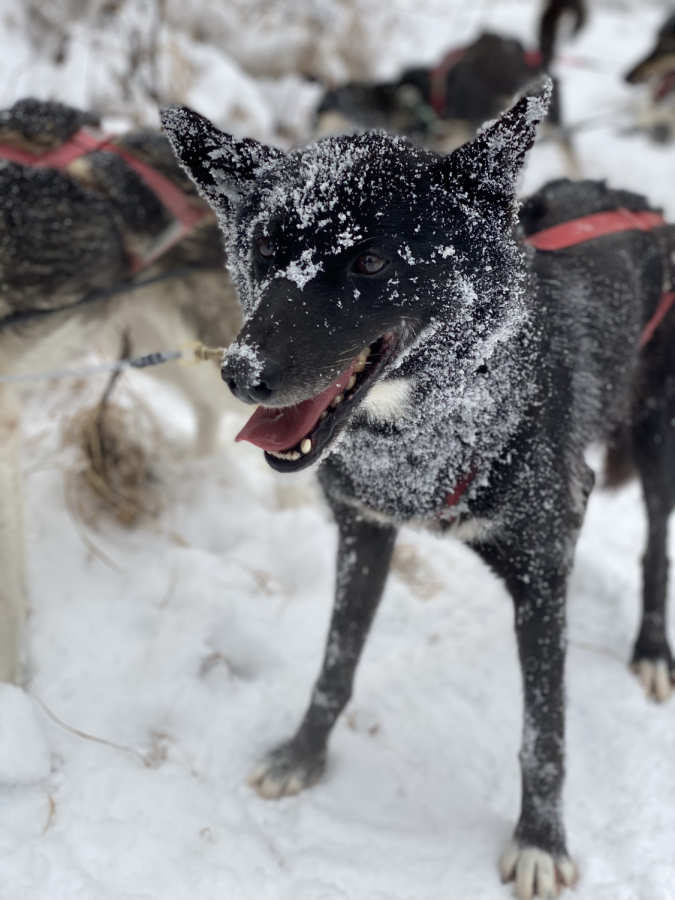Training
December 19, 2022
The care Trail Breaker Kennel puts into their dogs includes training which prepares the dogs for a race and helps prevent injuries.
“The only reason a dog would get over-exhausted is if the person didn’t train them,” Handler said.
During training runs, Handler switches up the teams and positions of the dogs, so they don’t get bored.
“We don’t want every dog working with the same dog in the same position every single run because that’s like us working with the same person for 40 years,” Handler said.
She takes into account the harmony of the sled dog’s mental and physical health.
“If you have a really healthy dog, but they’re not happy, they’re not going to want to run or pull. If you have a really happy dog that is super overweight and super unhealthy, then they can’t run because they’ll give themselves a heart attack,” Handler said.
The Trail Breaker Kennel is located near a river and lake making a perfect playground for dogs during their time away from pulling sleds.
“We do a lot of off leash walks and playtime, so they can hang out and have fun. During the summer, it’s a lot of swimming,” Handler said.
While someone’s golden retriever might love playing fetch, Handler’s Alaskan huskies love pulling. To train sled dogs pulling for the first time, Handler uses their natural instincts to her advantage.
“When we first put on the harness, they usually flip around and smell it just to check it out and see what it is. A lot of times we just go for a walk with them not pulling anything just so that they get used to the feeling of the harness,” Handler said.
After that, the process is quick.
“I would say it takes about 15 feet before they’re just like ‘oh my god we’re pulling!’…they could be wearing tutus and sunglasses…and they start pulling and not caring about the harness,” Handler said.
A newbie sled dog will run for half a mile to get used to it.
“And by the third time they’ve been in a harness, they get so excited they can’t even stay still for us to get the harness on because they know they get to pull and have fun,” Handler said.
The training differs from season to season. The mileage increases in increments from two miles a day, to five, then eight, then slowly climbs to up to 120 miles a day, as mid and long distance races approach in the early months of the year.
“At that point, we’re going to be going anywhere between 80 to 120 miles a day,” Handler said.
These races that span from 150 to 700 miles are needed to qualify for longer races like the Iditarod.
The sheer number of miles calls for proper awareness of a dog’s condition.
Along trails, Handler brings a vet kit in case a dog gets injured. She also brings a “doggy burrito bag” which is a bag that restrains the movement of an injured dog, so they can rest.
“They hang out in our sled until we get to a place with a vet, or if it’s a training run, once we get back, we can evaluate if it’s a pulled muscle or if a moose punched a hole in the trail, and they stepped in it wrong and rolled their ankle. We can evaluate if they need to see a vet right away,” Handler said.

